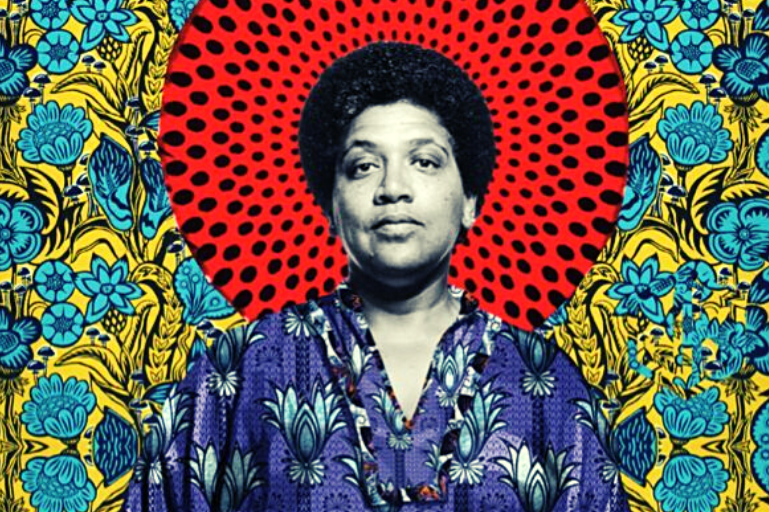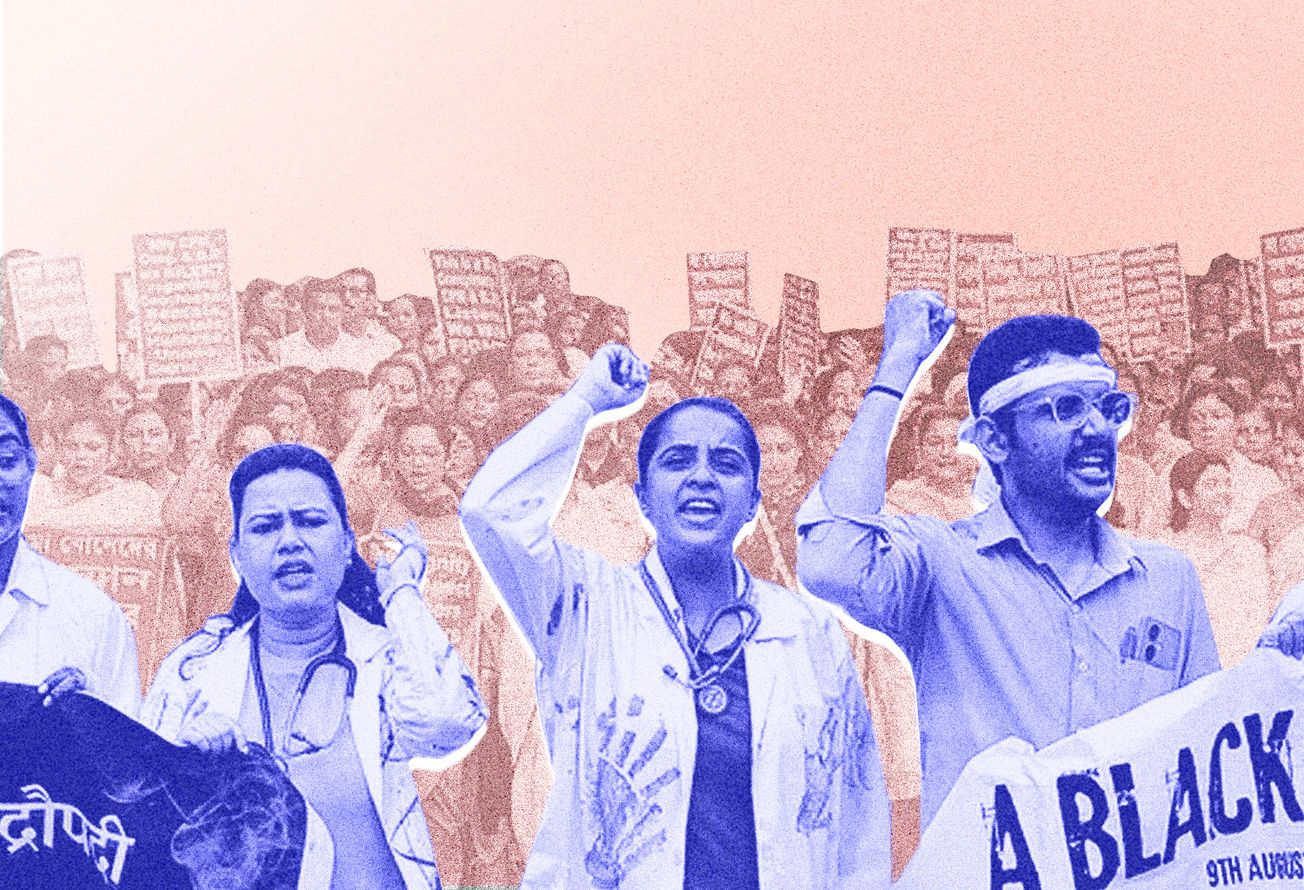Image Courtesy: Sora Shimazaki
When you try to visualize a gynaecologist’s clinic, what kind of an image comes to mind? A woman medical practitioner, a poster of a pregnant woman with her smiling husband’s hand on her belly, and maybe even a monochromatic sonography in progress. Menstrual cups, abortion services, vaginal diagrams, or menopause messaging likely did not find a place in your imagination.
During my most recent visit to the gynaecologist, a rather absurd infomercial greeted me in the waiting room—an advertisement of healthy baby food that a to-be mother and her proud family had chosen. Of all things gynaecology encompasses, information about baby food being disseminated so prominently is strange—as if all those visiting the clinic are people who either already have or desire to have a newborn. A common space meant for patients with diverse needs is used to share information relevant only to a few. Concerns most people have, such as menstrual health or vaginal hygiene are not deemed important enough. As a single 22-year-old woman who is neither married nor planning to have a baby, I felt eerily out of place at the gynaecologist, as if impinging upon a medical space not meant for me.
Whether it is the lack of infomercials about contraceptive methods or the symbolic silence staged by censoring words like “vagina”, health spaces for uterus owners are often restrictively designed, with negligible emphasis on their lived experiences and their sexual needs. Even in supposedly advanced metropolitan hospitals, gynaecology departments are renamed as “mother and child” departments. The writing on the walls on the other hand, stubbornly insist that “there’s no greater joy than motherhood… for all women”. Aspects of spatiality, such as quotes, logo graphics, the infomercials, the layouts, or the nomenclature—the use of space and design in healthcare—has been invariably used to maintain or promote patriarchal ideals of gender and womanhood.
Pregnancy is decidedly the single-most preferred theme for the design of gynaecological spaces. Pictures of infants, breastfeeding women, and heterosexual couples cradling a newborn are frequent markers—all generalized prototypes for those deserving of gynaecological care. The notion being reiterated is that uterus owners' bodies exist to the extent that their reproductive lives do, thus defining sexual health from a relational lens—a to-be mother, a responsible wife, and an ideal daughter-in-law. They signal that the sexual health concerns of a woman will become relevant when they impact the family whose lineage she is supposed to expand. Not only is motherhood unjustly associated only with ciswomen, even basic sexual health concerns of trans, intersex, non-binary, and queer folk are invisibilised.
Seemingly insignificant wall decorations in gynaecological clinics may only get a fleeting glance, but that is quite enough to invalidate those who don’t fit the heterosexual, procreating archetype—trans men who want to give birth or not, women who cannot or do not want to give birth, sexually active queer or unmarried women—all are conveniently relegated to the category of exceptions, people who are not the priority for gynaecologists. In a certain way, these “first care” or “motherhood” clinics may be the polar opposite of Jean Milburn’s therapy room (from the Netflix show Sex Education) furnished with models of vulvas of all shapes, sizes, and colours. Not only do they forget to remind us that all vulvas are beautiful, they deceive us into believing that only one type of vulva exists—one that will push out an infant at some point.
Even though pregnancy dominates the discourse in health environments that are supposedly geared to cater to all people in need of gynaecological care, they don’t go too far in making the space comfortable for pregnant bodies. Expectant mothers are seen consistently fidgeting, as they are forced to sit on stiff, narrow chairs with their expanding bellies. Breast-feeding mothers use their chunnis or pallas as isolated breastfeeding chambers, their laps the only seating space available for infants. Pregnancy is all-desired, but pregnant bodies aren’t cherished. It’s as if even the design of the maternity ward necessitates women to fit the patriarchal notion of femininity—a woman who lives for motherhood and who doesn’t take up space; a woman who feeds her newborn on time and finds a way to do so without imposing herself on others. Manipulating spatial metrics for their comfort is simply not a priority.
The perils of this exclusionary design naturally also pervade consultation rooms—most women have visited one in their adult lives. The quintessential general practitioner’s chamber has a doctor’s chair, a diagonally aligned patient chair, and a chair located across the doctor’s table for the patient’s attendant. The placing assigns clear roles—the patient with bodily autonomy from whom consent has to be obtained and the passive attendant. But the gynaecologist's consultation chamber often has two symmetrically aligned chairs placed across the doctor’s chair and a center table, often with stirrups. By locating both the patient and the attendant identically in space, it automatically equalizes the power dynamics between the two—regarding both as equal decision-makers in matters of health related to women’s bodies. While these elements may promote a sense of family perspective which is often preferred in India, they also implicitly promote a collective outlook over women’s bodies. A couple’s collective consent is equated with the woman’s own consent; the woman’s narrative must also be the couple’s narrative.
Gynaecology, as Mary Daly wrote in Gyn/Ecology, the Metaethics of Radical Feminism, “keep(s) women supine, objectified, and degraded – a condition ritually symbolized by the gynecologist's stirrups…. By their combined efforts, these specialists keep many women in the state of perpetual patients whose bodies and minds are constantly invaded by foreign objects—knives, needles, speculums, carcinogenic hormone injections and pills, sickening self-images, festering fixations, debilitating dogmas.”
Undoubtedly, its patriarchal and racist history has shaped the apathetic way in which gynaecological spaces receive women and people of non-normative genders. Men took over the domain of obstetrics and gynaecology as the main protagonists, pushing midwives (women) out after the 18th century to become experts on the female body. For instance, the speculum used today for pelvic exams has an “ethically fraught history”. The first ever speculum was a silver gravy spoon used on a slave woman by a man James Marion Sims, who was for a long time recognized as the father of gynaecology.
These seemingly trivial characteristics of the physical elements surrounding patients may appear to be relatively insignificant given the larger predicaments present in medicine, but their messaging is revealing. They represent the stereotypes that are better left undisrupted. This results in women and people of non-normative genders feeling invalidated, gaining only partial information about their bodies, and returning home with questions they didn’t know they could ask.
The spatial metrics of gynaecological health need to change. We need to set the stage (literally) for environments that welcome the unique identities of people who need gynaecological care rather than backstage them. We need to design for their bodies—broader chairs, posters about cervical cancer vaccines, spacious breast-feeding compartments, and sanitary pad dispensers. People need access to more information about endometriosis, abortion legislations, menopause, affordable contraceptives, and sustainable menstrual health products. Baby food can wait.
Editor's note: This article was revised on 23rd Oct, 2021 to further include health concerns of people other than cishet women who also need gynaecological care.









